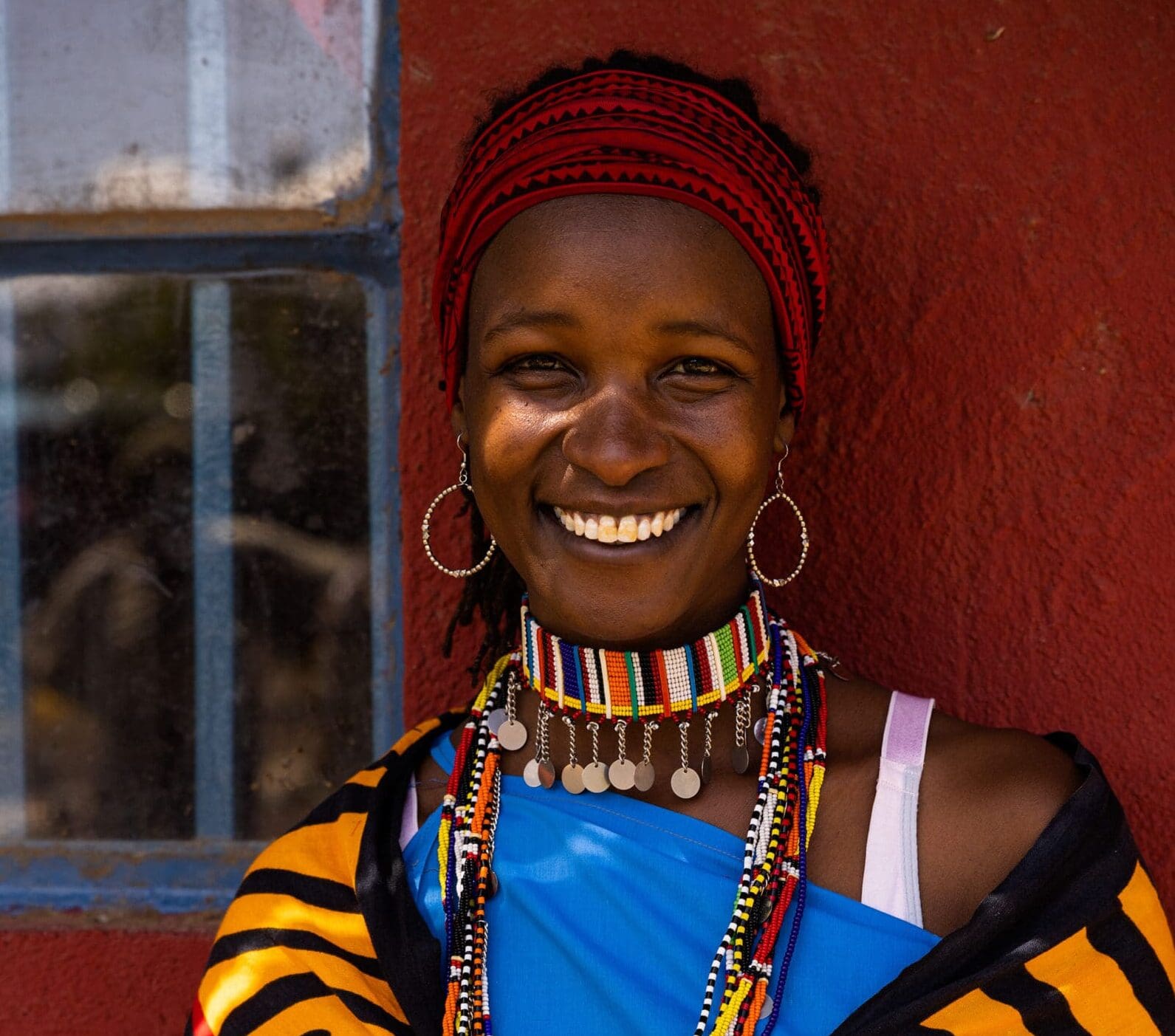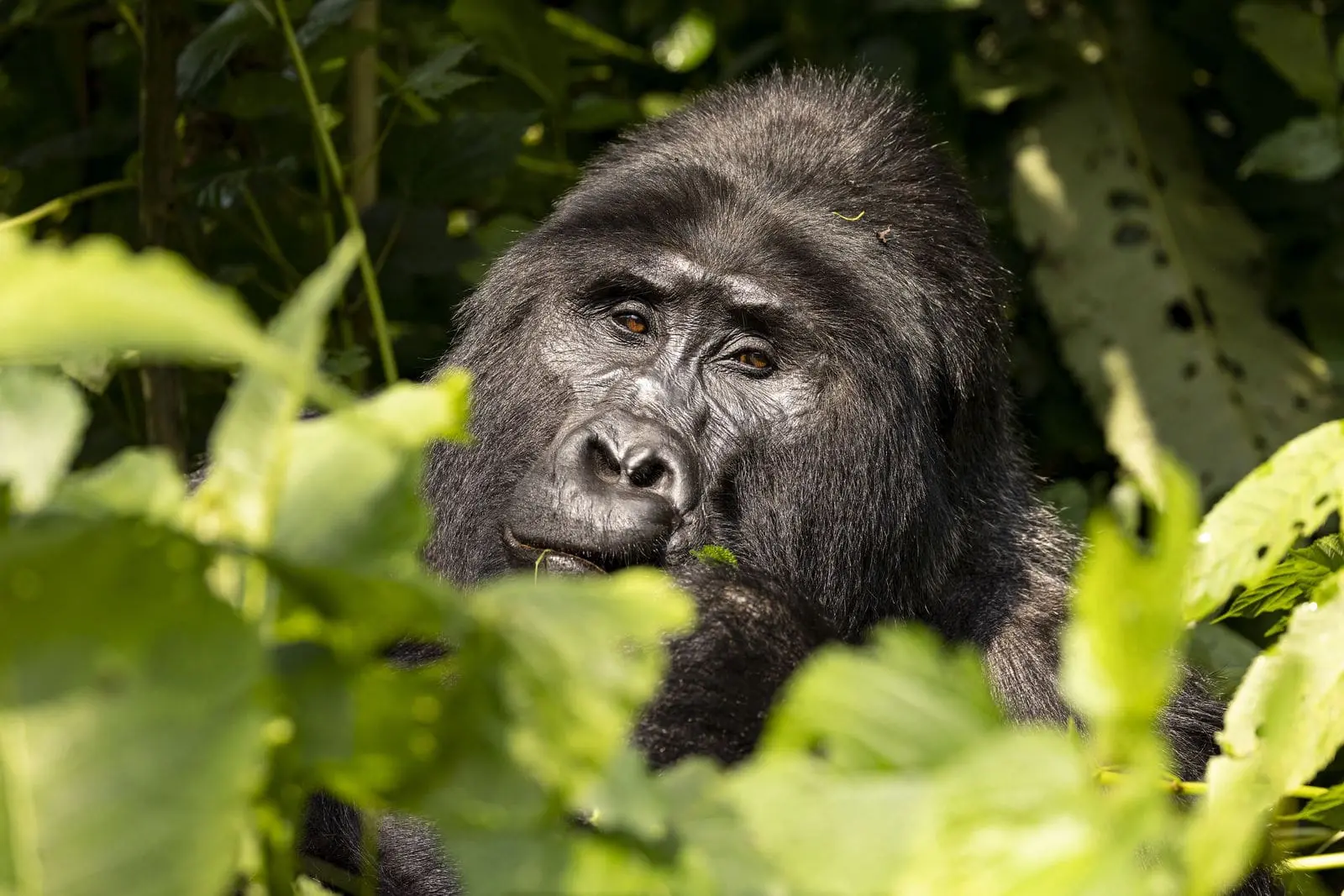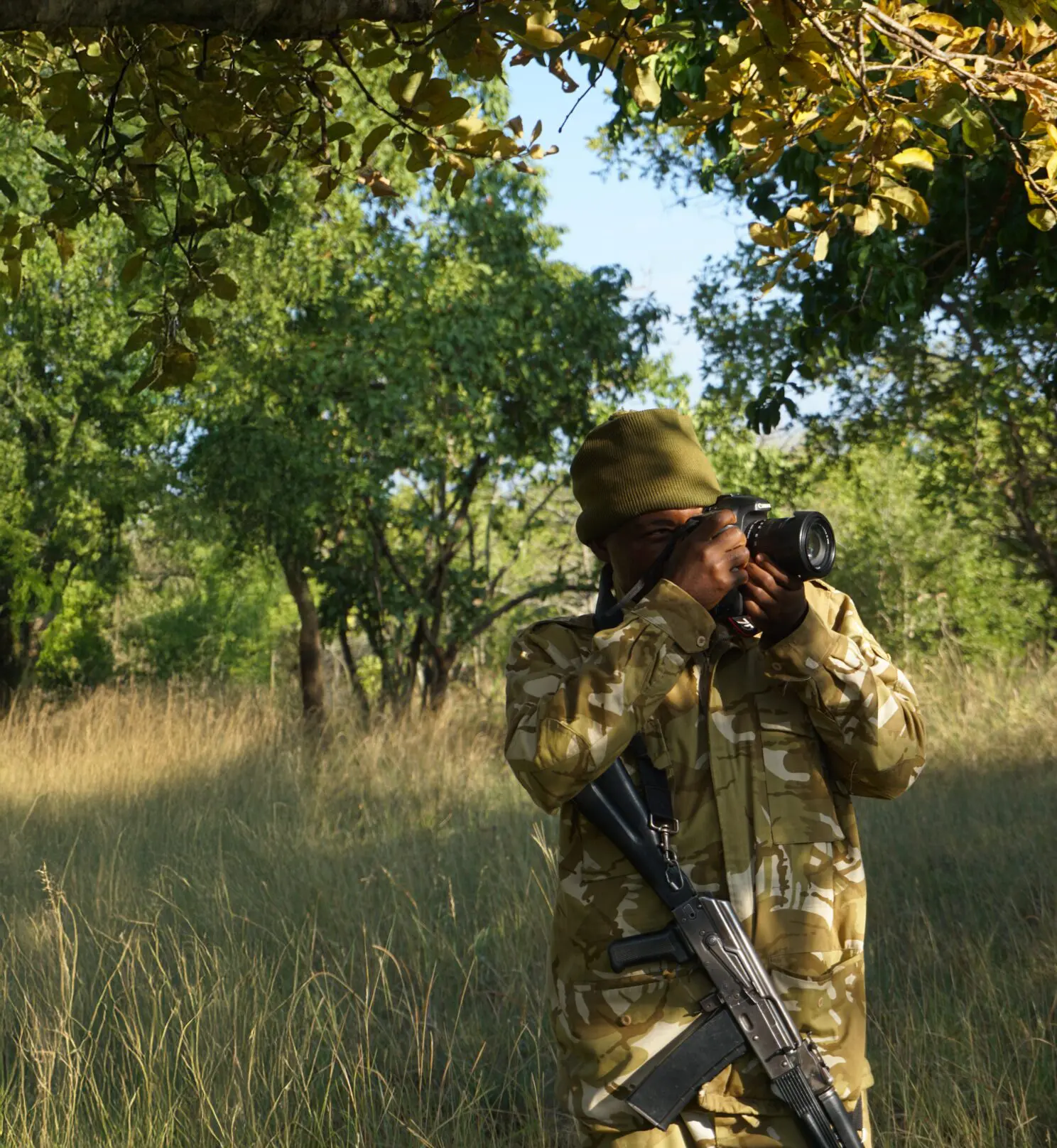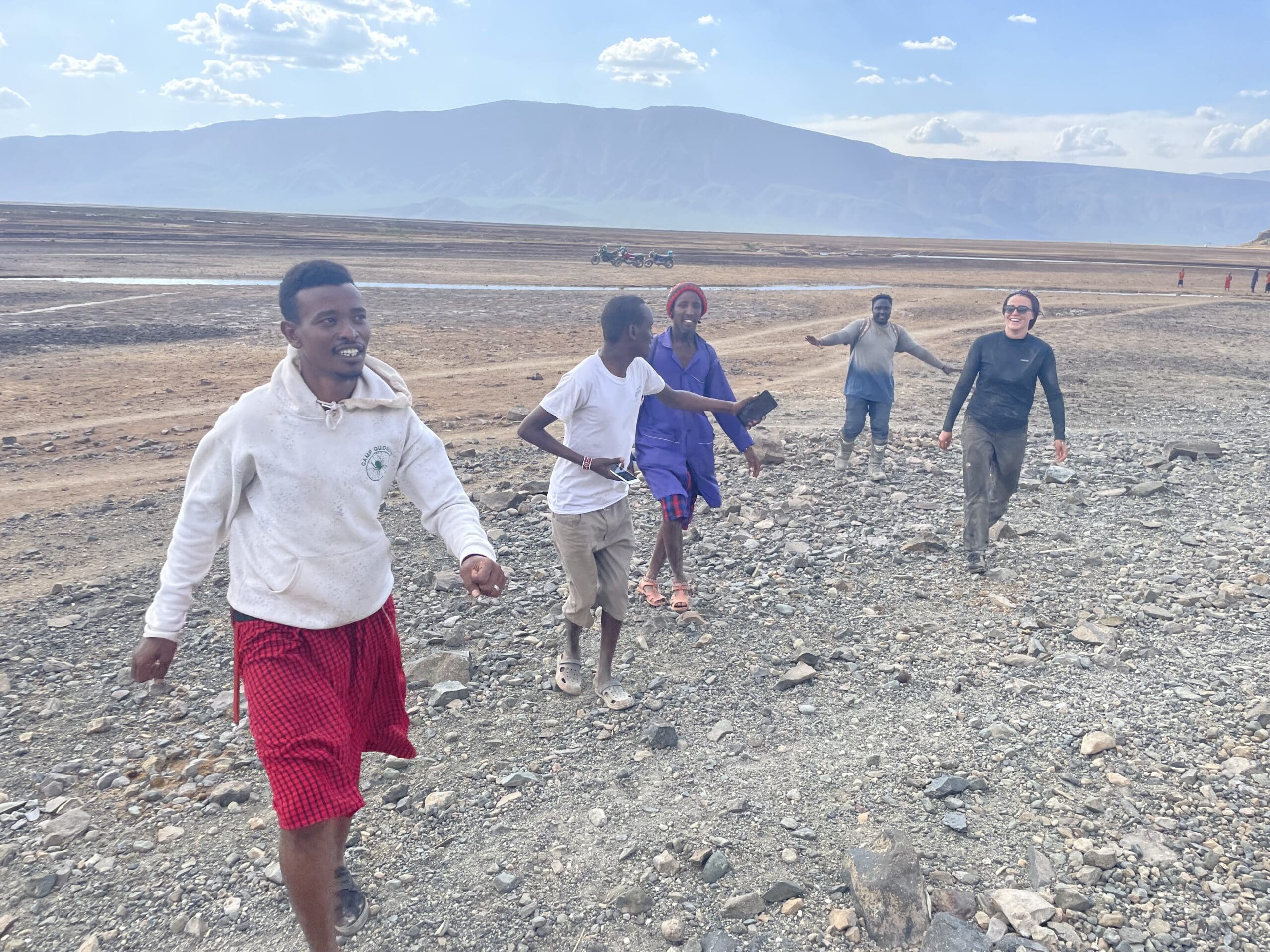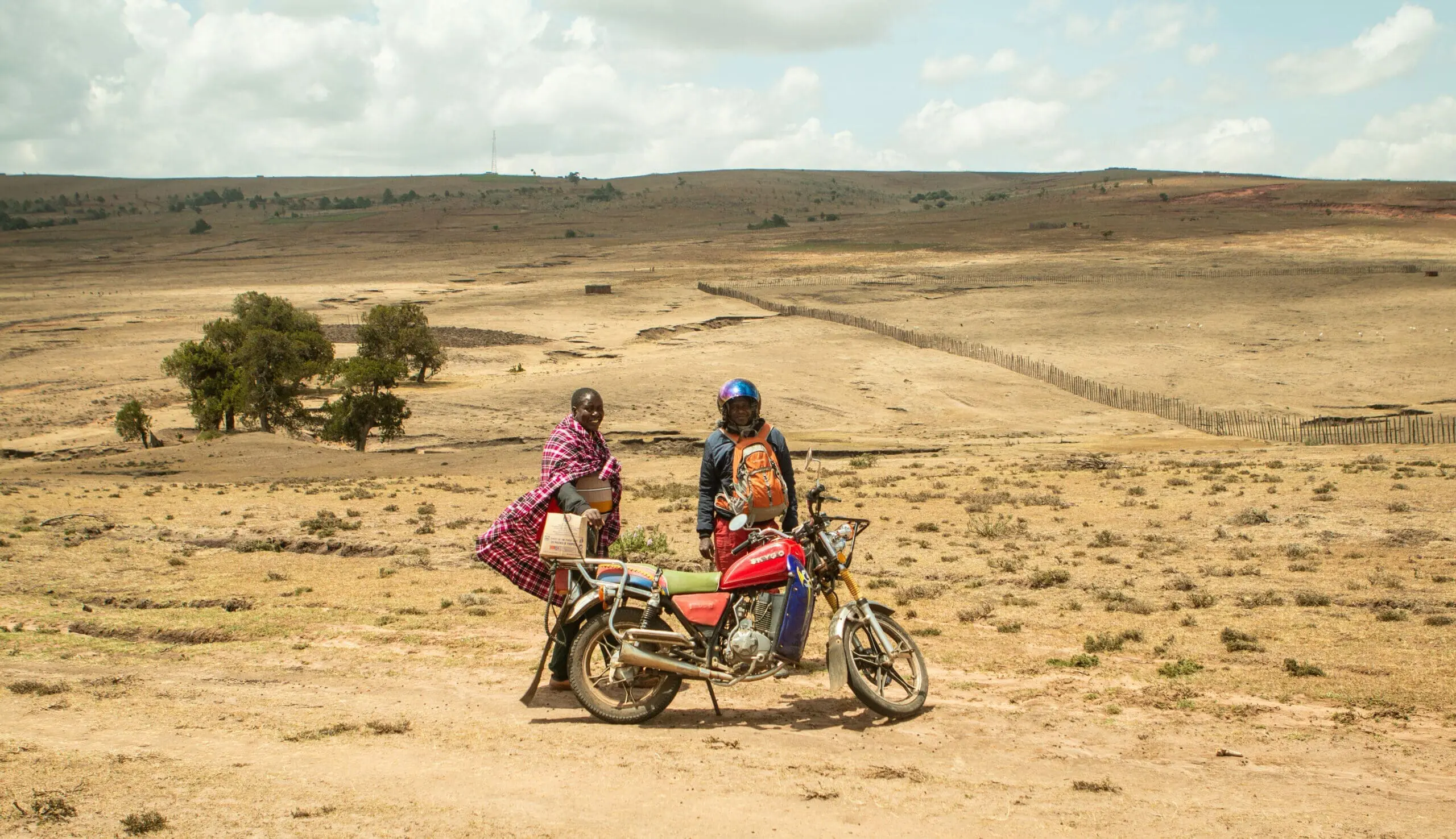The Mountain Gorillas in Uganda
In Uganda, there are two areas where you can find mountain gorillas: Bwindi Impenetrable National Park and Mgahinga National Park. The latter is only 34 square kilometers in size, making it the smallest national park in Uganda. Mgahinga is home to over 80 mountain gorillas, but the Nyakagezi family is the only gorilla family you can visit in the park. It is said that this family is relatively easy to find because they have a limited range where they feed throughout the day. And that sounds perfect to me. I’m choosing that option.
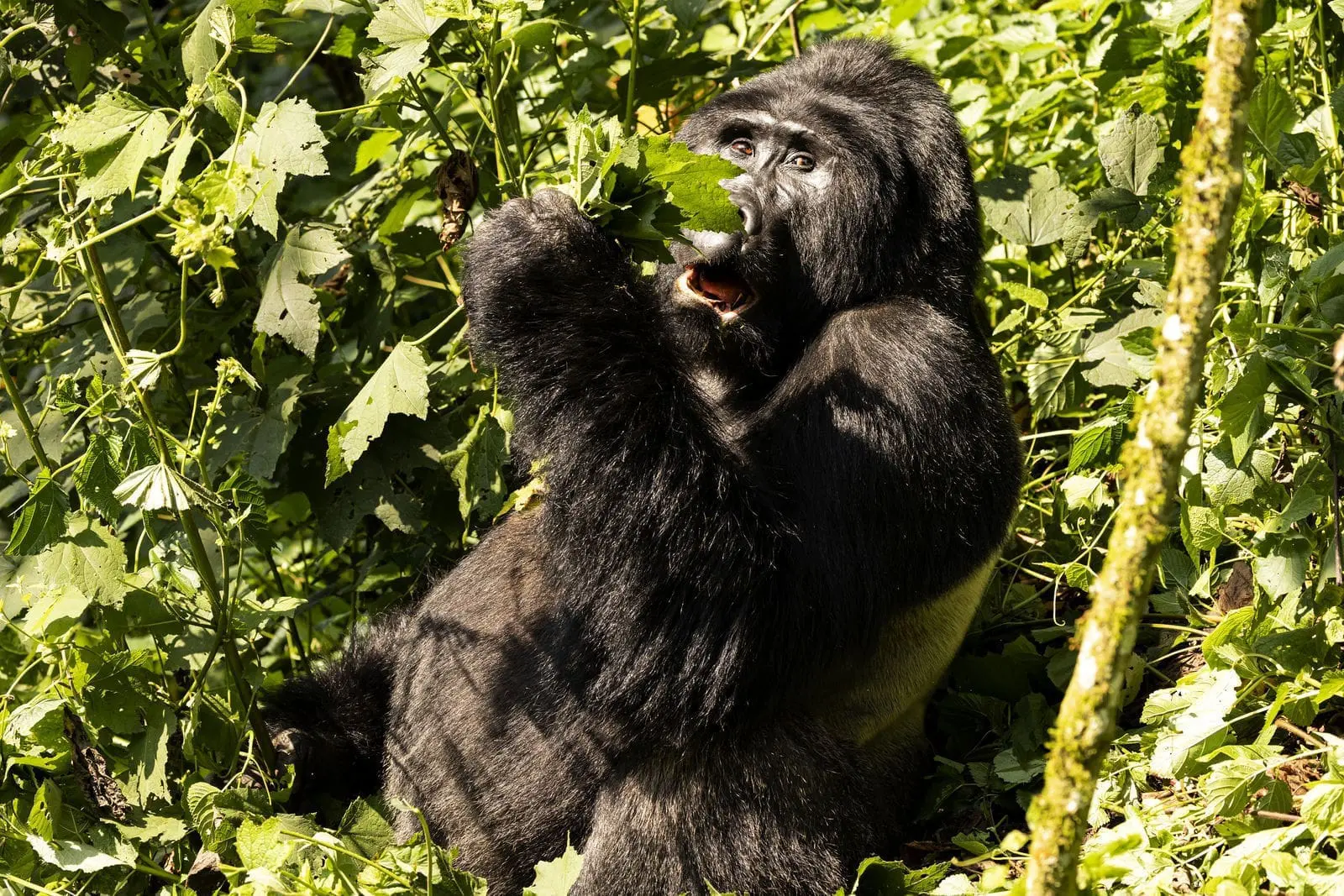
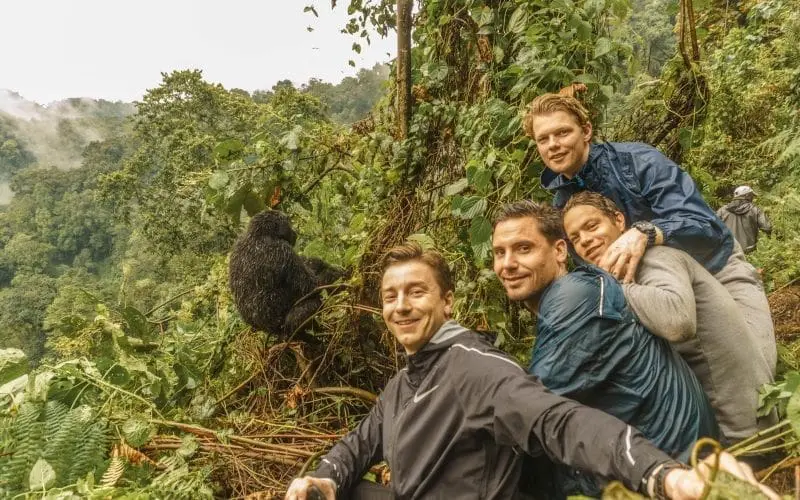 The journey continues. After about six more stops—where I diligently close the windows beside me whenever I spot the frantic vendors sprinting toward the bus—we are finally nearing the park. The highway has given way to a dirt road, surrounded by nothing but lush nature. Wow! Nothing but towering trees, vines, mountains, and a touch of mist here and there. It feels like a scene from a movie.
The accommodation where we’ll be staying is basic, but most importantly: there’s a bed. And after spending over 12 hours on a bus, I can tell you—it feels absolutely amazing to finally lie down. A moment of rest.
The journey continues. After about six more stops—where I diligently close the windows beside me whenever I spot the frantic vendors sprinting toward the bus—we are finally nearing the park. The highway has given way to a dirt road, surrounded by nothing but lush nature. Wow! Nothing but towering trees, vines, mountains, and a touch of mist here and there. It feels like a scene from a movie.
The accommodation where we’ll be staying is basic, but most importantly: there’s a bed. And after spending over 12 hours on a bus, I can tell you—it feels absolutely amazing to finally lie down. A moment of rest.
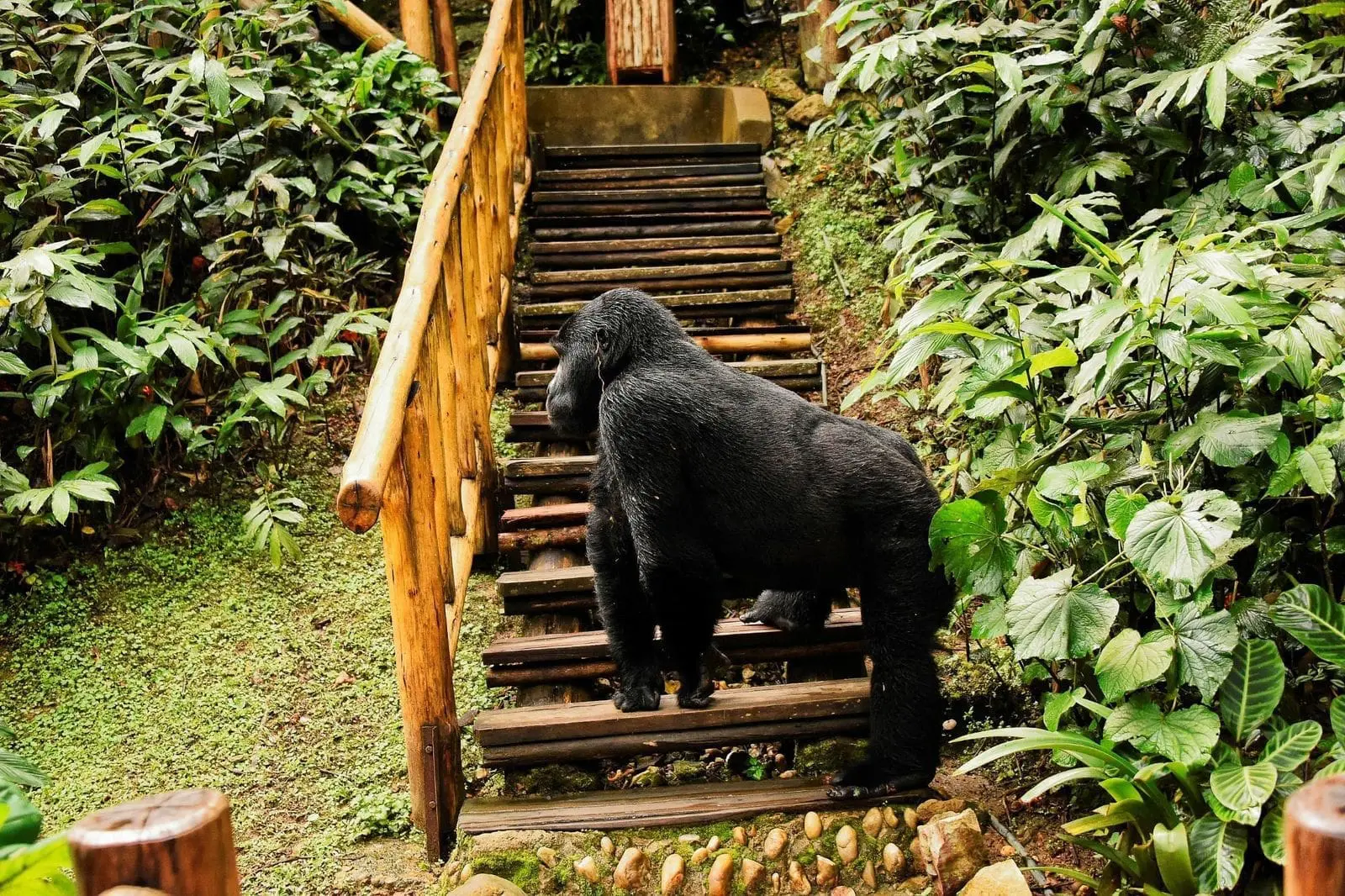
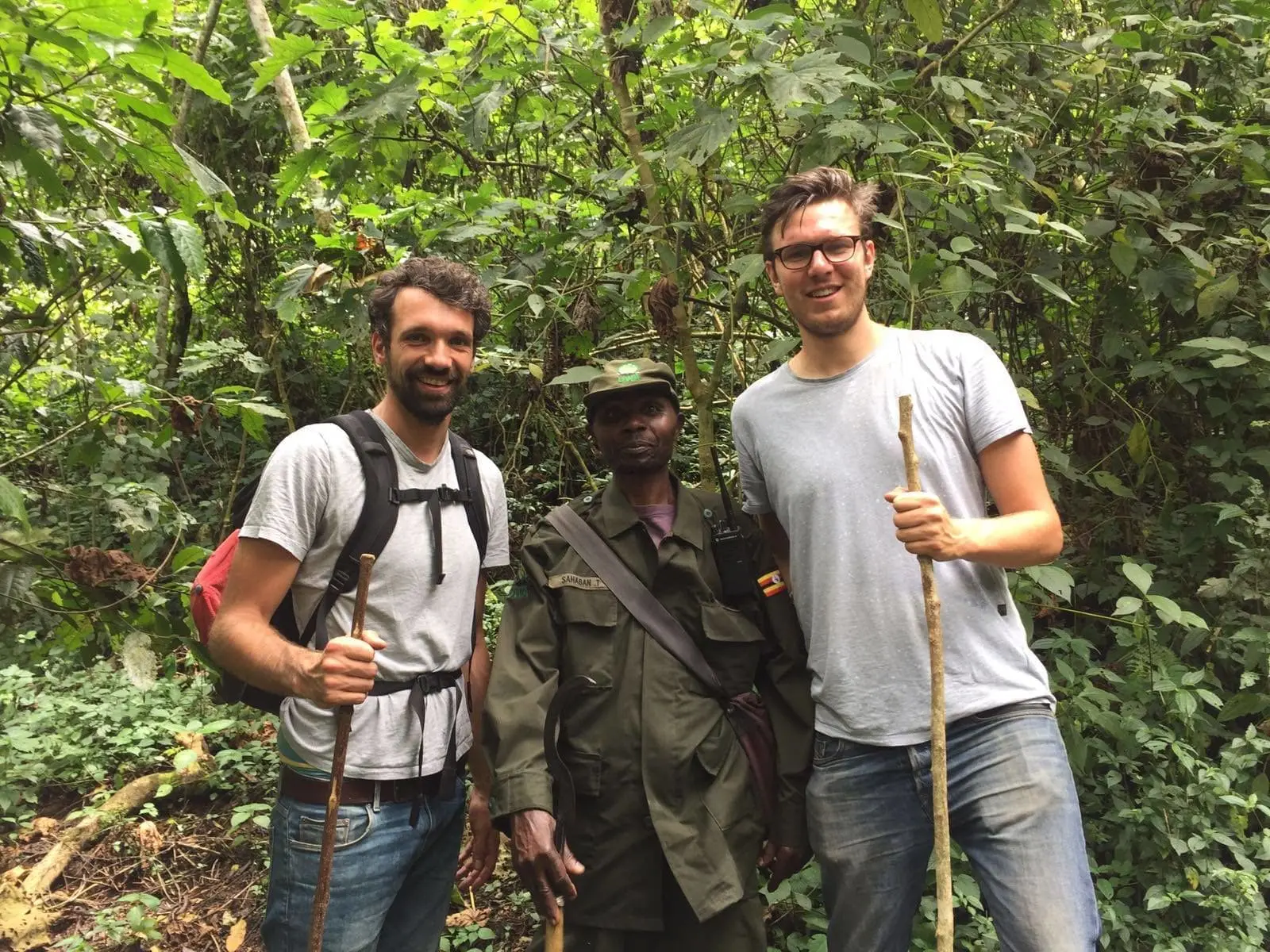
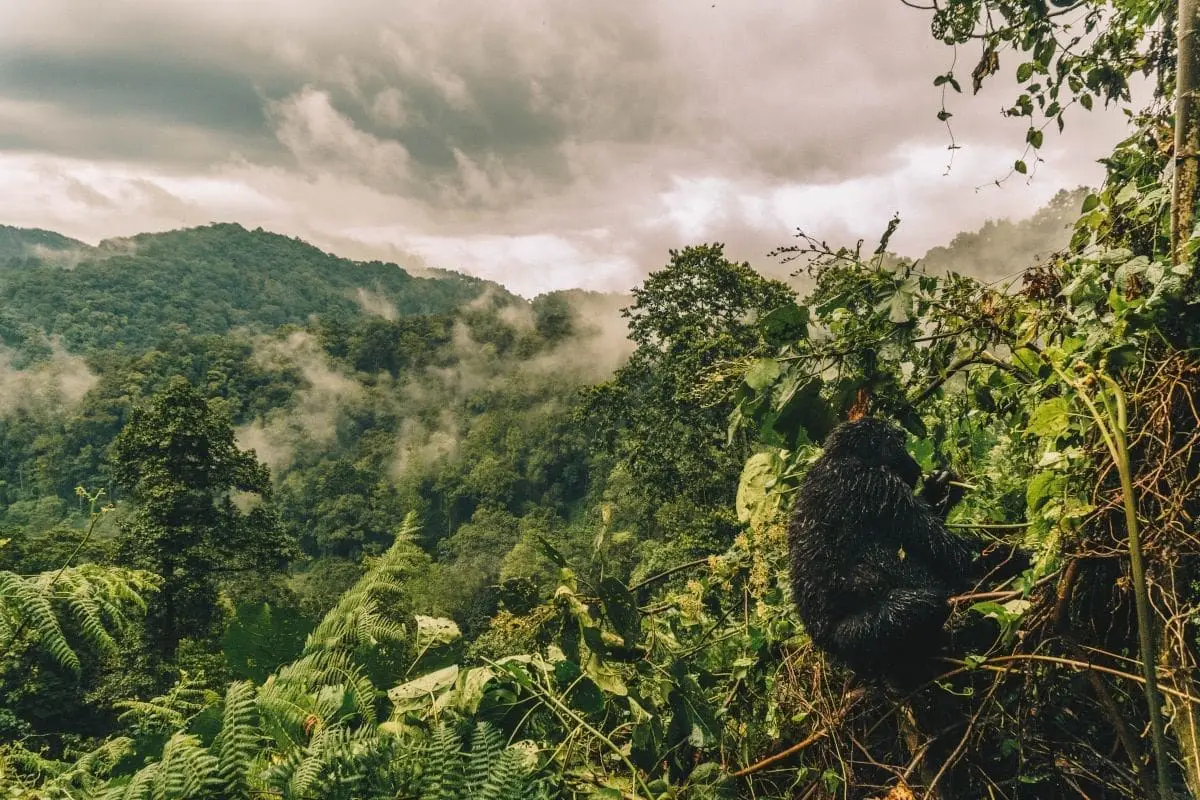 Okoth has moved a few meters ahead and gestures with his arms for us to come closer. "This is baby Suubi, she is two months old," he says. I try to spot little Suubi, but all I can see is the broad back of one of the gorillas.
Until... suddenly, a tiny gorilla comes sprinting past. She is maybe the size of the silverback’s head. I MELT. I have never seen such an adorable little black, furry ball in my life.
Baby Suubi, whose name means hope in the local language, runs excitedly from one adult gorilla to another. She is full of energy and eager to play, making it known by drumming her tiny fists on her chest in the most heart-melting way.
I remain completely still, trying not to move so that Suubi and her family can go about their business undisturbed. I count seven gorillas in the jungle, each doing their own thing—one is chewing vigorously, another is being groomed, while others simply sit and stare into the distance.
It’s surreal how these great apes don’t seem to care about us at all. Every now and then, they glance in our direction, but then they just go back to their routine, which mostly consists of eating and doing absolutely nothing.
Experiencing this up close, in the wild, is nothing short of incredible.
Okoth has moved a few meters ahead and gestures with his arms for us to come closer. "This is baby Suubi, she is two months old," he says. I try to spot little Suubi, but all I can see is the broad back of one of the gorillas.
Until... suddenly, a tiny gorilla comes sprinting past. She is maybe the size of the silverback’s head. I MELT. I have never seen such an adorable little black, furry ball in my life.
Baby Suubi, whose name means hope in the local language, runs excitedly from one adult gorilla to another. She is full of energy and eager to play, making it known by drumming her tiny fists on her chest in the most heart-melting way.
I remain completely still, trying not to move so that Suubi and her family can go about their business undisturbed. I count seven gorillas in the jungle, each doing their own thing—one is chewing vigorously, another is being groomed, while others simply sit and stare into the distance.
It’s surreal how these great apes don’t seem to care about us at all. Every now and then, they glance in our direction, but then they just go back to their routine, which mostly consists of eating and doing absolutely nothing.
Experiencing this up close, in the wild, is nothing short of incredible.
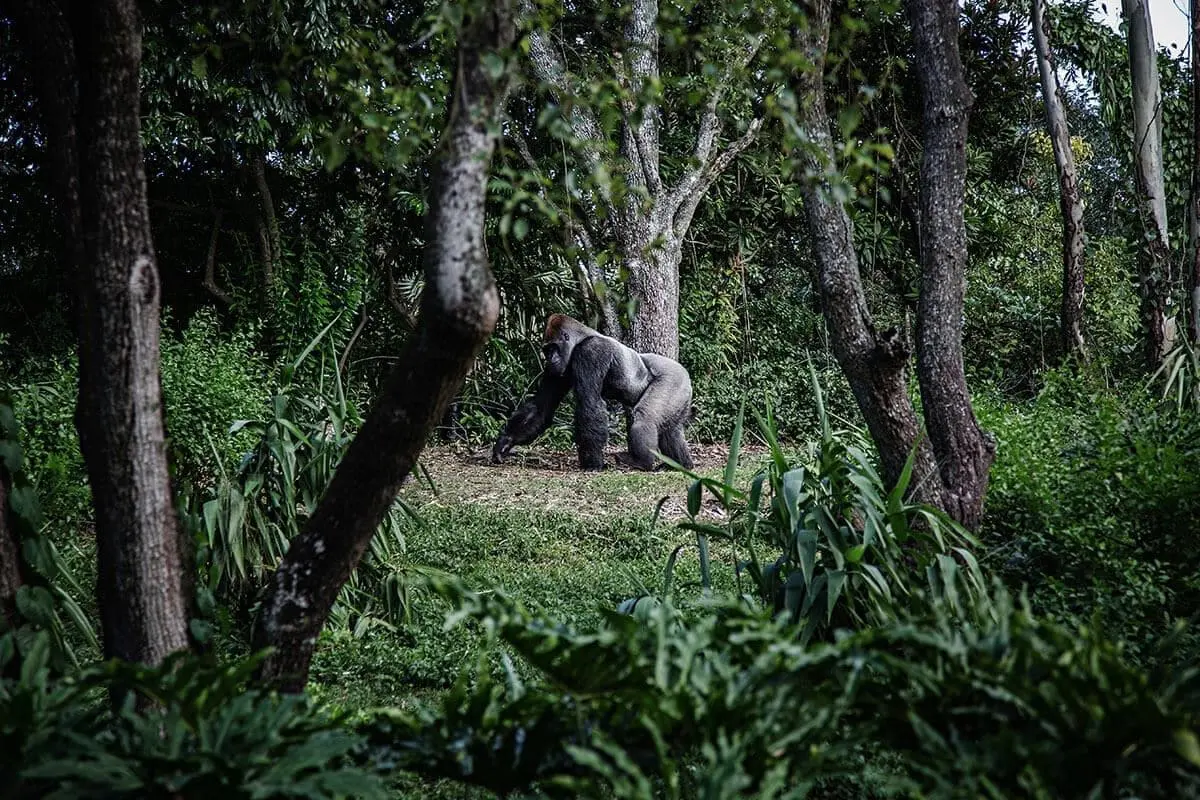 "It is time to go," says Okoth a little later. I look at him, startled. What? Huh? Already? We just got here!
Then I glance at my watch and realize we've already spent over an hour with the Nyakagezi family—exactly the maximum allowed time for a gorilla encounter.
With a quick lunch stop in the jungle—making sure to take all our waste with us—it's time to head back to the accommodation.
My gorilla trekking adventure has come to an end.
"It is time to go," says Okoth a little later. I look at him, startled. What? Huh? Already? We just got here!
Then I glance at my watch and realize we've already spent over an hour with the Nyakagezi family—exactly the maximum allowed time for a gorilla encounter.
With a quick lunch stop in the jungle—making sure to take all our waste with us—it's time to head back to the accommodation.
My gorilla trekking adventure has come to an end.
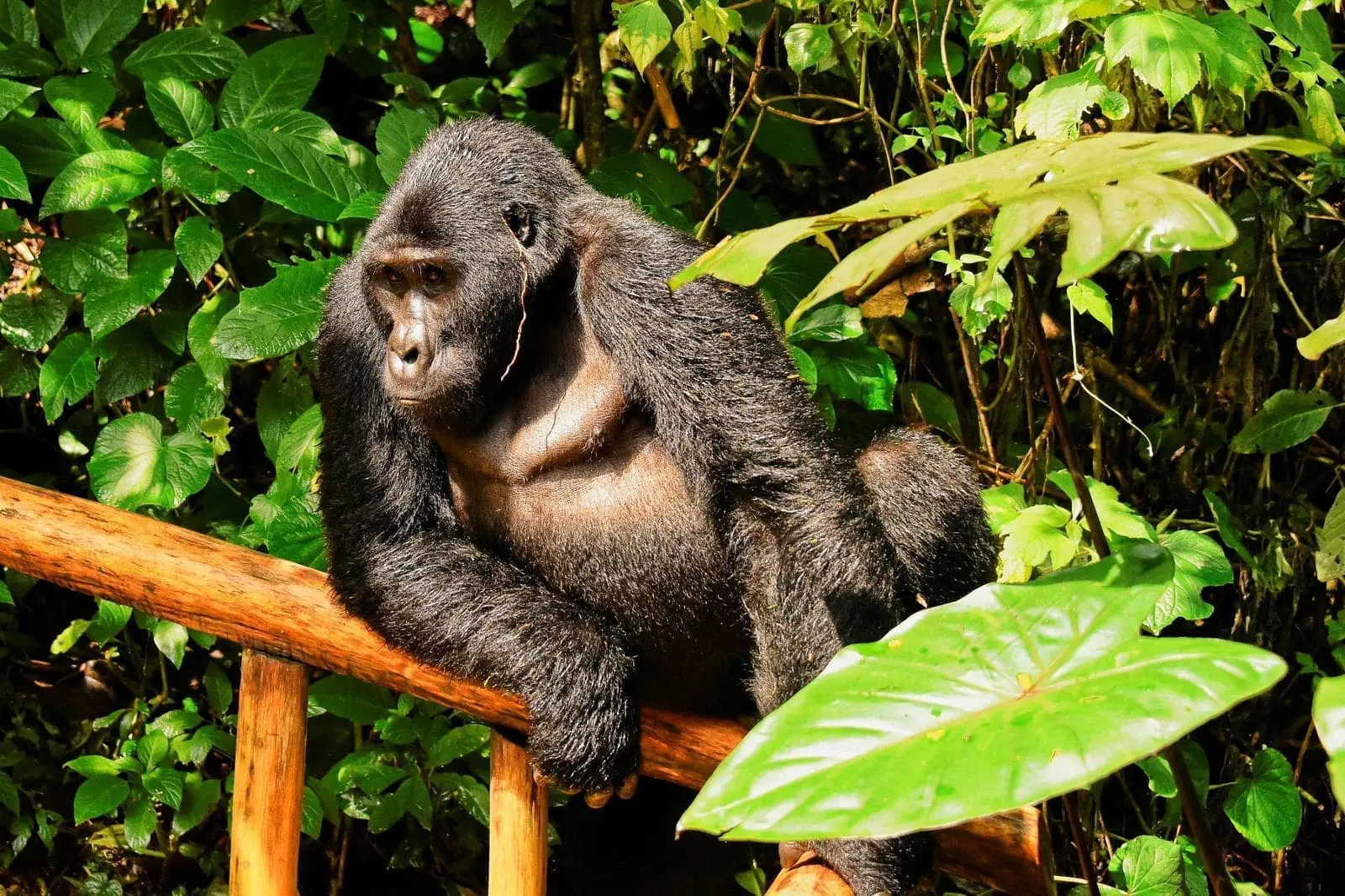

An interesting bus journey
On to Mgahinga National Park! Both parks where the gorillas reside are located in the far southwestern tip of Uganda, about 500 kilometers of winding (often pothole-ridden) roads from Kampala. A tough distance that you can cover in a comfy 4×4 (don’t forget to look outside!), or as I chose: by public transport. Together with a group of Ugandans, I sit in the bus. Comfortable? Mwa. To my left, a rather large African man has partially parked his right buttock on my seat, and to my right, a girl is singing loudly with her earbuds in. But I really can't complain. We are in Uganda, and I’ve had worse bus rides here before (like the time a chicken between my feet couldn't wait until we arrived to relieve itself, for example). The journey goes quite well. Although we’re making good progress on the highway, we are frequently interrupted by numerous stops. Roadside vendors usually spot us from a distance and proceed to block the road. They swarm the bus like a cloud of bees. No escape. To my right, someone shoves a skewer with what I suspect to be liver almost into my ear. “Is nice, madam, try,” the vendor says with a slightly ominous grin. My gaze shifts from his face to the skewer. Fat slowly drips onto the ground, just next to my toe. “Next time,” I reply. To my right, I see my neighbor happily munching on two skewers. And through that same window, another ten skewers are now being thrust in my face. “No thanks,” I say politely. My neighbor handles it better. He hands me his half-warm bottle of Coke and the two skewers, then shuts the windows. "Now they won’t disturb us anymore." Ah, smart! The journey continues. After about six more stops—where I diligently close the windows beside me whenever I spot the frantic vendors sprinting toward the bus—we are finally nearing the park. The highway has given way to a dirt road, surrounded by nothing but lush nature. Wow! Nothing but towering trees, vines, mountains, and a touch of mist here and there. It feels like a scene from a movie.
The accommodation where we’ll be staying is basic, but most importantly: there’s a bed. And after spending over 12 hours on a bus, I can tell you—it feels absolutely amazing to finally lie down. A moment of rest.
The journey continues. After about six more stops—where I diligently close the windows beside me whenever I spot the frantic vendors sprinting toward the bus—we are finally nearing the park. The highway has given way to a dirt road, surrounded by nothing but lush nature. Wow! Nothing but towering trees, vines, mountains, and a touch of mist here and there. It feels like a scene from a movie.
The accommodation where we’ll be staying is basic, but most importantly: there’s a bed. And after spending over 12 hours on a bus, I can tell you—it feels absolutely amazing to finally lie down. A moment of rest.

Oh my! The day!
After an early start, we receive a briefing from Ranger Okoth of the Uganda Wildlife Authority. This briefing is crucial, as it covers the "rules" of the trek. "Don’t wear any red clothes; it can make the gorillas angry," Okoth begins. I glance over at the man next to me, dressed in a bright red rain jacket, staring straight ahead with a tense expression. His fingers fidget with his zipper. Yeah, buddy, that one’s coming off soon. We’re also told that it’s allowed to "answer nature’s call" in the forest if necessary… but there’s a process. Dig a hole, squat, aim carefully, and make sure to cover it properly afterward. Why? Because our bacteria can easily be transmitted to gorillas. Did you know gorillas share 98% of their DNA with humans? That’s also why you can’t go on a gorilla trek if you have a cold or are feeling sick. Oh, and another fun fact: if you get close to gorillas, never make "ooh-ooh-ah-ah" sounds! You might unknowingly say something offensive and pick a fight with them. That’s not what we want. Now fully briefed, we begin our trek. With the ranger leading the way and a guard with a rifle behind us—because, yes, you might suddenly encounter an aggressive elephant—we set off. I’m handed a walking stick for better grip, as the muddy terrain is slippery. The first half-hour feels easy, I think to myself. But not even ten minutes later, we’re tackling a steep hill. My heart is pounding, and I’m already regretting skipping those few workout sessions. The rather large African man at the back of the group trudges along, sweat dripping from his forehead in countless beads. Phew, at least I’m not the only one struggling.Poop
"Follow my steps," whispers ranger Okoth. The forest gives way to a dense jungle. Despite my poor fitness, I feel incredibly happy surrounded by this stunning nature. The air smells so fresh—like real nature, nothing like the exhaust fumes I’m used to in Kampala. Meanwhile, Okoth has received word via walkie-talkie about the gorillas’ whereabouts. Once again, the vegetation changes. The dense jungle transitions into a bamboo forest. It looks absolutely magical. "Watch out," one of my fellow trekkers suddenly says, a little too loudly. Startled, I jump aside. Right in front of me lies a piece of poop. Human poop. I recall what the ranger said during the briefing: Dig a hole. Aim. Cover it up. But clearly, someone didn’t follow those instructions. I look at Okoth in surprise. "This is fresh gorilla dung," he says with a grin. "That means they are close." OH EM GEE. They’re nearby! Our pace quickens. Okoth is now clearing the path ahead with his machete—otherwise, we’d never make it through the dense bamboo jungle. The hills gradually turn into full-fledged mountains, but with this rush of adrenaline, I barely notice.
Face to Face
"Be quiet," someone whispers. It is completely silent, and the only thing I can hear is... GORILLAS!! As if they are just around the corner—figuratively speaking, of course. Less than five minutes later, I can’t believe my eyes. An immense silverback, the dominant male of the family, is calmly chewing on a piece of bamboo. Okoth explains that each gorilla in this family has a name. This silverback is called Mark, and the female sitting right next to him is named Nyiramwiza. You can tell she’s a female—she is noticeably smaller than Mark. She looks straight at us. All I can do is stand frozen in awe, staring at these great apes. So close! We are no more than 9 meters away. Okoth has moved a few meters ahead and gestures with his arms for us to come closer. "This is baby Suubi, she is two months old," he says. I try to spot little Suubi, but all I can see is the broad back of one of the gorillas.
Until... suddenly, a tiny gorilla comes sprinting past. She is maybe the size of the silverback’s head. I MELT. I have never seen such an adorable little black, furry ball in my life.
Baby Suubi, whose name means hope in the local language, runs excitedly from one adult gorilla to another. She is full of energy and eager to play, making it known by drumming her tiny fists on her chest in the most heart-melting way.
I remain completely still, trying not to move so that Suubi and her family can go about their business undisturbed. I count seven gorillas in the jungle, each doing their own thing—one is chewing vigorously, another is being groomed, while others simply sit and stare into the distance.
It’s surreal how these great apes don’t seem to care about us at all. Every now and then, they glance in our direction, but then they just go back to their routine, which mostly consists of eating and doing absolutely nothing.
Experiencing this up close, in the wild, is nothing short of incredible.
Okoth has moved a few meters ahead and gestures with his arms for us to come closer. "This is baby Suubi, she is two months old," he says. I try to spot little Suubi, but all I can see is the broad back of one of the gorillas.
Until... suddenly, a tiny gorilla comes sprinting past. She is maybe the size of the silverback’s head. I MELT. I have never seen such an adorable little black, furry ball in my life.
Baby Suubi, whose name means hope in the local language, runs excitedly from one adult gorilla to another. She is full of energy and eager to play, making it known by drumming her tiny fists on her chest in the most heart-melting way.
I remain completely still, trying not to move so that Suubi and her family can go about their business undisturbed. I count seven gorillas in the jungle, each doing their own thing—one is chewing vigorously, another is being groomed, while others simply sit and stare into the distance.
It’s surreal how these great apes don’t seem to care about us at all. Every now and then, they glance in our direction, but then they just go back to their routine, which mostly consists of eating and doing absolutely nothing.
Experiencing this up close, in the wild, is nothing short of incredible.
 "It is time to go," says Okoth a little later. I look at him, startled. What? Huh? Already? We just got here!
Then I glance at my watch and realize we've already spent over an hour with the Nyakagezi family—exactly the maximum allowed time for a gorilla encounter.
With a quick lunch stop in the jungle—making sure to take all our waste with us—it's time to head back to the accommodation.
My gorilla trekking adventure has come to an end.
"It is time to go," says Okoth a little later. I look at him, startled. What? Huh? Already? We just got here!
Then I glance at my watch and realize we've already spent over an hour with the Nyakagezi family—exactly the maximum allowed time for a gorilla encounter.
With a quick lunch stop in the jungle—making sure to take all our waste with us—it's time to head back to the accommodation.
My gorilla trekking adventure has come to an end.



